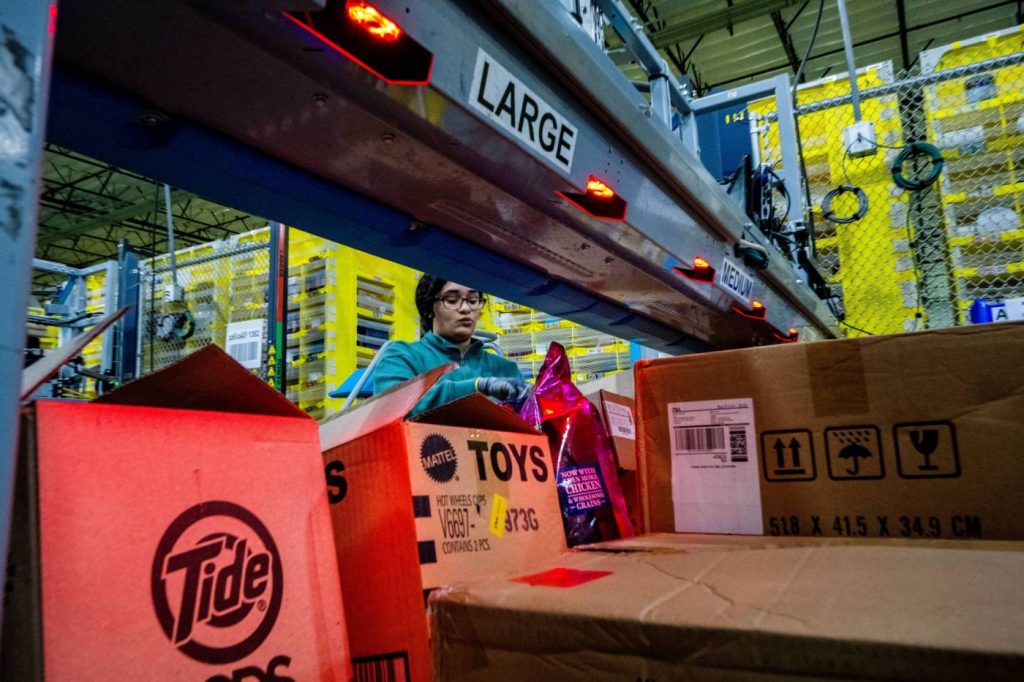Eight years and two votes later, state-mandated relief from sweltering heat might finally be on its way to Inland Empire warehouse workers and other Californians who toil indoors.
Meanwhile, one of the Inland area’s biggest logistics employers has announced new steps to cool workers. Amazon’s employees and logistics worker advocates have criticized the online shopping giant for not doing enough to prevent heat stroke and other heat-related illnesses in its warehouses.
California’s Occupational Safety and Health Standards Board on Thursday, June 20, passed a revised set of regulations to protect indoor workers from health-threatening temperatures.
The board, also known as Cal/OSHA, originally approved the rules in March. But Gov. Gavin Newsom’s administration held up enforcement, citing cost concerns over implementing the rules in jails and state prisons.
The revised rules passed this month don’t apply to correctional facilities or “emergency operations directly involved in the protection of life or property,” the state Department of Industrial Relations said via email.
Tim Shadix, legal director for the Ontario-based Warehouse Worker Resource Center, praised the new rules.
“We have never taken our eyes off the goal — protections for all California workers from heat,” he said in a news release. “The road to get to the vote today has been long, but we hope there are no further delays and employees and employers are informed of these new protections before summer’s end.”
Reacting to the board’s vote, Amazon spokesperson Maureen Lynch Vogel said via email: “We’ve seen the positive effects of having a strong heat mitigation program, which we proactively implemented to help protect employees and Amazon delivery service partners. We comply with all regulations everywhere we operate and will do so in this instance, too.”
California, Oregon and Minnesota are the only U.S. states with indoor workplace heat standards, NBC News reported.
California’s rules stem from a state law signed in 2016. Since then, enforcement has been held up by the need to craft a regulatory framework.
The rules set temperature thresholds that, if reached, would require employers to take steps to either lower inside temperatures or give workers heat relief.
Once the indoor temperature reaches 82 degrees, employers would have to give workers water and access to cooling areas. Fans or other cooling devices would have to be used once the temperature hits 87 degrees.
Indoor heat is a particular worry in the Inland Empire, where it’s common for average summertime temperatures to reach 100 degrees or higher.
Warehouse workers — there are thousands of them in the massive Inland logistics sector — have said they’re forced to labor in stifling heat made worse by heat-emitting machinery and the breakneck pace of their jobs.
Amazon is often the target of those complaints, with workers alleging the company risks their safety by forcing them to meet strict production goals in high-heat areas.
Amazon, which was recently fined almost $6 million by California officials who alleged it was failing to tell its workers about a law against abusive production quotas, denies using a quota system and argues it already has cooling measures in place.
Earlier this month, Amazon outlined what it calls a “comprehensive program” to protect workers from excessive heat, including putting air conditioning in all delivery vans and spending more than $59 million on insulation, driver cooling systems and cooling supplies.
“A core focus for us is keeping temperatures in our buildings comfortable,” read an explanation on an Amazon website.
“We’ve installed a variety of cooling measures in our buildings, including climate control systems and our state-of-the-art Building Management Systems, which constantly measure the temperature and heat index (temperature plus humidity) in our facilities and proactively alert employees when climate conditions change.”


